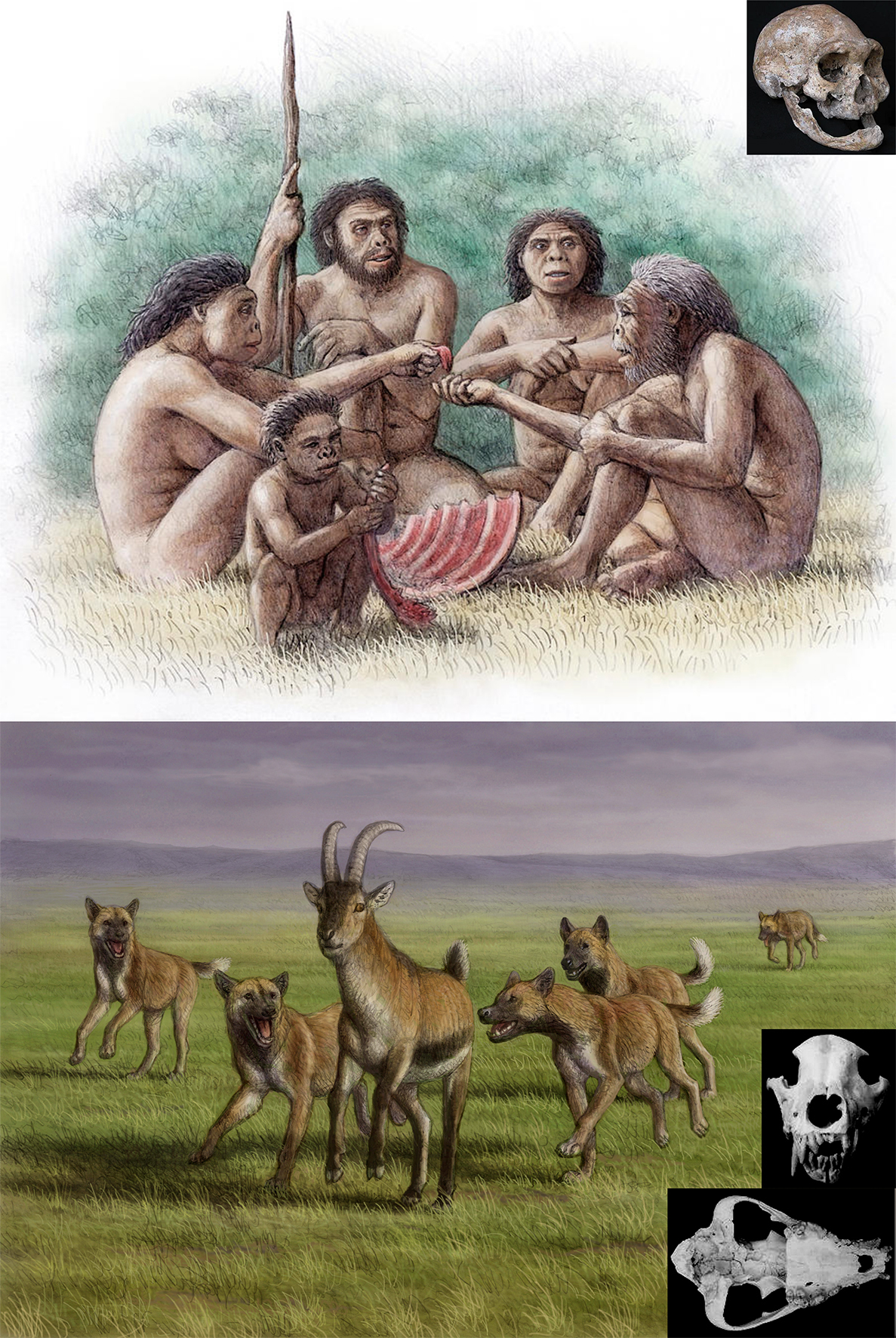Paleontology Dogs became 'man's best friend' in Europe
Emotional intelligence Kisses, friendship, revenge ... are not exclusive to humans: animals also feel emotions
The remains of a large prehistoric hunting dog found in Dmanisi, Georgia, could be the oldest evidence of the arrival of these canids on our continent.
According to the paleontologists who have analyzed the fossils,
dated between 1.77 1.76 million years ago
, these hunting dogs would have coexisted with hominins that lived in the same area in which they were found.
Details of the discovery are published this week in the journal
Scientific Reports
.
The scientists found several fossilized dental structures that suggest that the Dmanisi dog belonged to the species
Xenocyon) lycaonoides
, the
Eurasian hunting dog
, which originated in East Asia and could be the ancestor of today's African hunting dogs.
It is the oldest hunting dog that is closer to Europe (Georgia is practically on the border between Europe and Asia). It is known that during the Calabrian period of the Pleistocene and over a million years (from 1.8 million years ago to 0.8 million years) a large number of hunting dogs from Asia reached Europe and Africa, following probably that our ancestors undertook but in reverse. The fossil record shows, in fact, that this animal was one of the carnivorous species that spread the most in the world.
Above, recreation of a scene based on a paleontological find: a group of 'Homo erectus' in which one of the individuals has lost all his teeth and needs help from the group to survive;
below, two Eurasian dogs hunting a goat of the species 'Hemitragus albus' Mauricio Antón
The team, led by Saverio Bartolini-Lucenti, from the University of Florence, did not detect significant wear on the animal's teeth, suggesting that when it died, the dog was a young but large adult, estimating its weight at around 30 kilograms.
The dog's dental characteristics also coincide with other species similar to wild dogs (canids) of the same era, whose diet was mostly carnivorous (meat accounted for more than 70% of it).
Thus, their premolars were narrower and shorter than those of the omnivores while their meat mule was large and sharp.
Human evolution
Dmanisi, located in the Caucasus at the gates of Europe and near the crossroads between Africa and Eurasia, is a key site to explain the dispersal of large species of animals. Hominid remains were also previously found in Dmanisi and are the earliest direct evidence of the departure from Africa, 1.8 million years ago. These remains, with an age of between 1.8 and 1.6 million years, would belong to a species that was considered intermediate between
Homo habilis
and
Homo erectus
and that has been called
Homo georgicus,
although there are paleontologists who disagree and do not they believe that the hominids that lived in that area of present-day Georgia can be considered a distinct species.
The finding now of this hunting dog of a species considered sociable, the study authors argue, suggests that hunting canids probably lived alongside those hominids.
According to the criteria of The Trust Project
Know more
Science and Health
science
FERIABioCultura is once again held in person in Barcelona
Renewal in government Pedro Duque: an ambitious but insufficient agenda to reform Spanish science
The faces of the green transition (XXII) Sam Hall: "Center-right parties can win politically with a green agenda"
See links of interest
Last News
Work calendar
Home THE WORLD TODAY
Master Investigation Journalism
Spain - Brazil, live
Pablo Carreño - Daniil Medvedev, live
Spain - Serbia, live
Spain - Argentina, live

